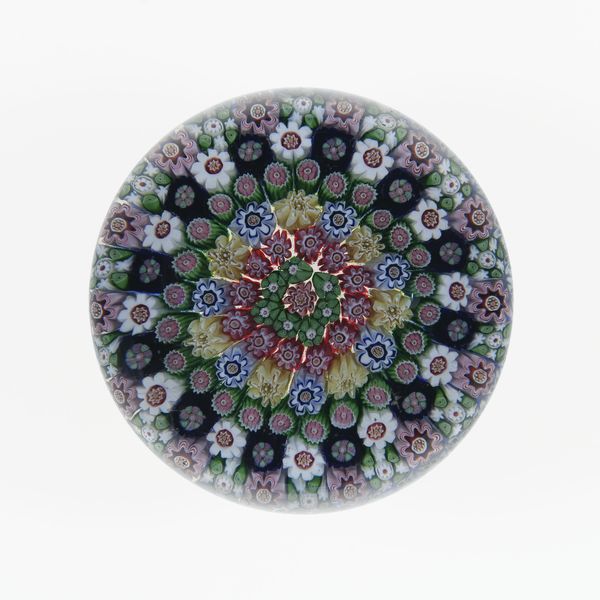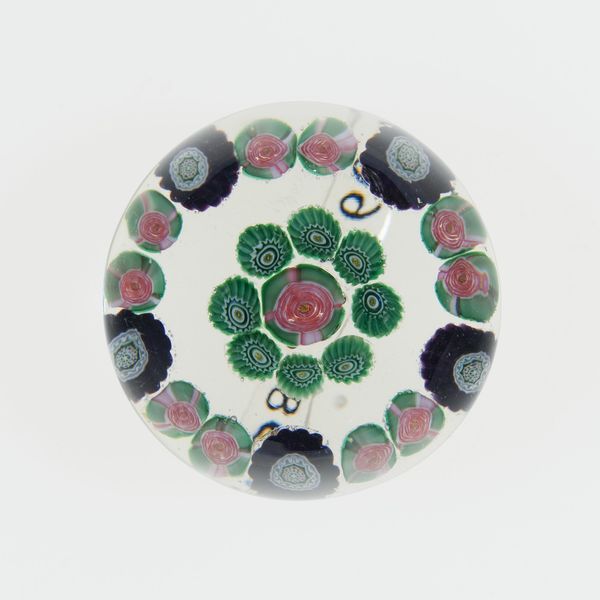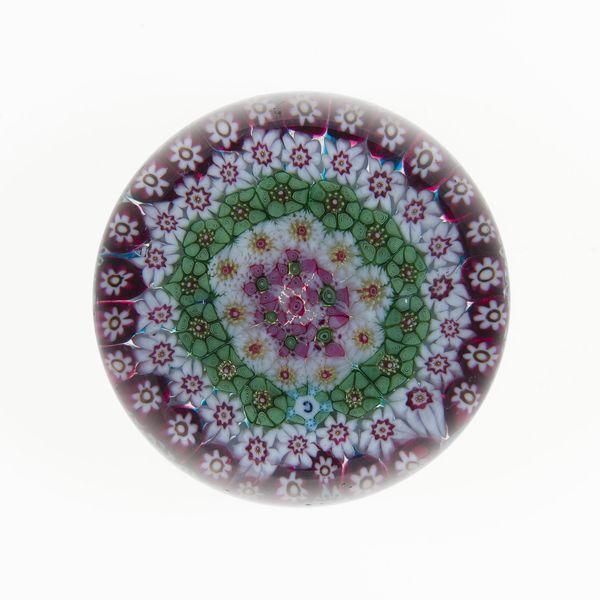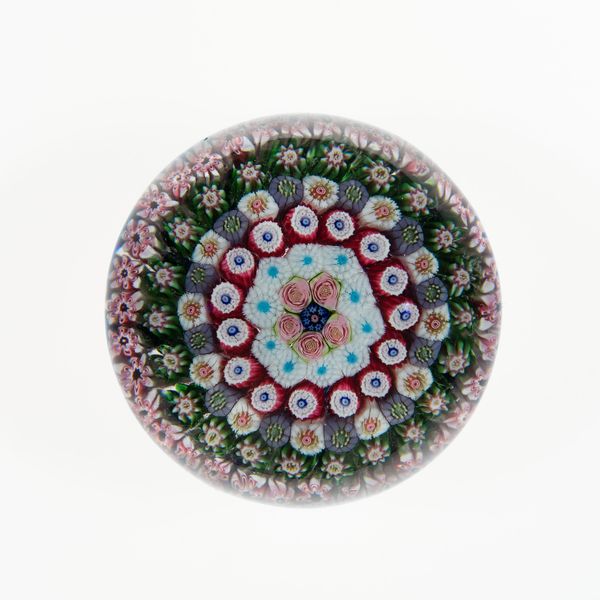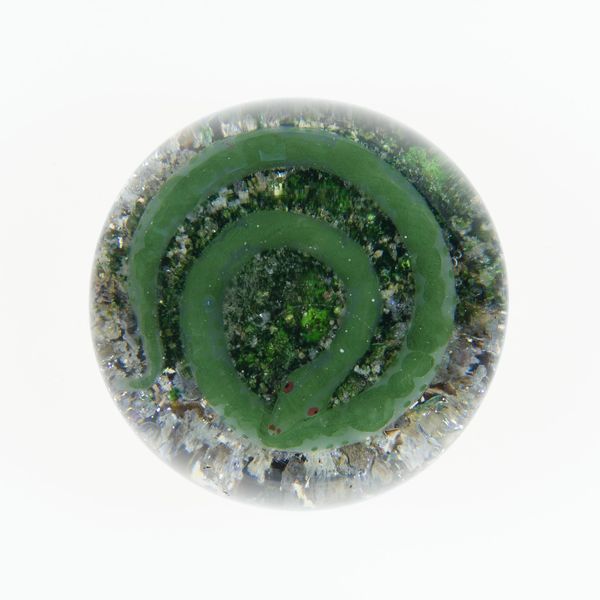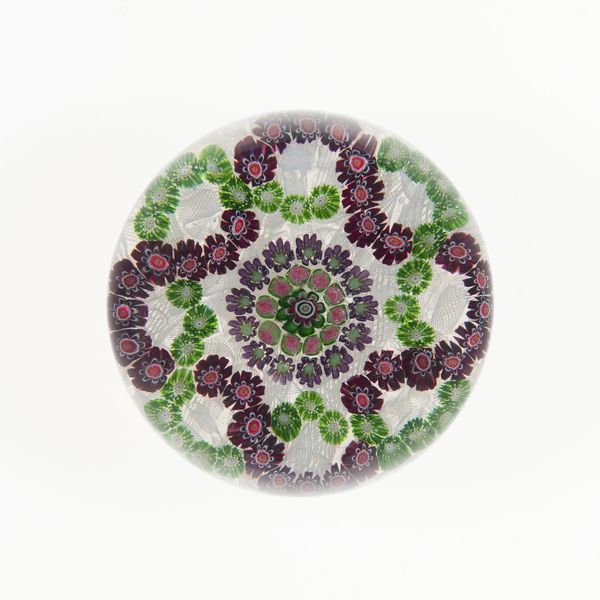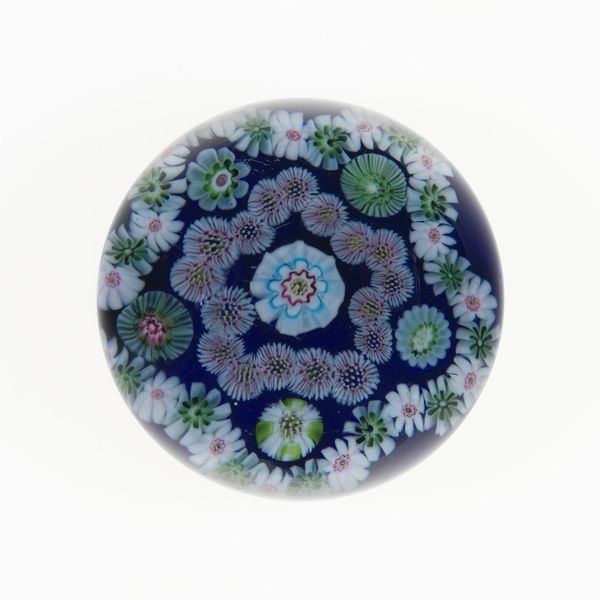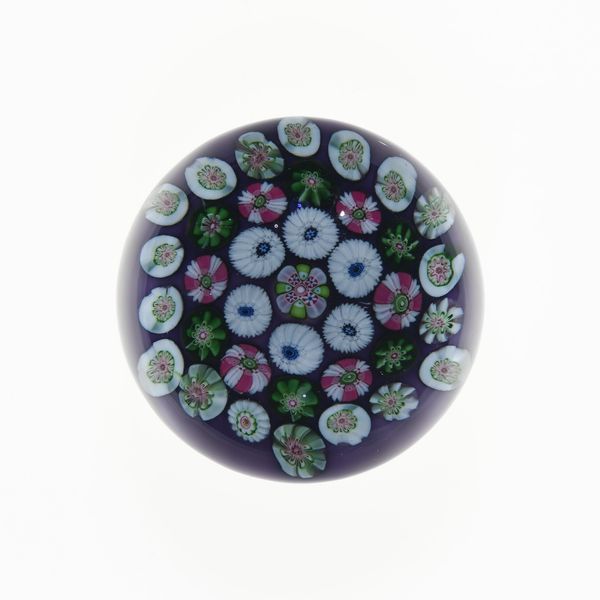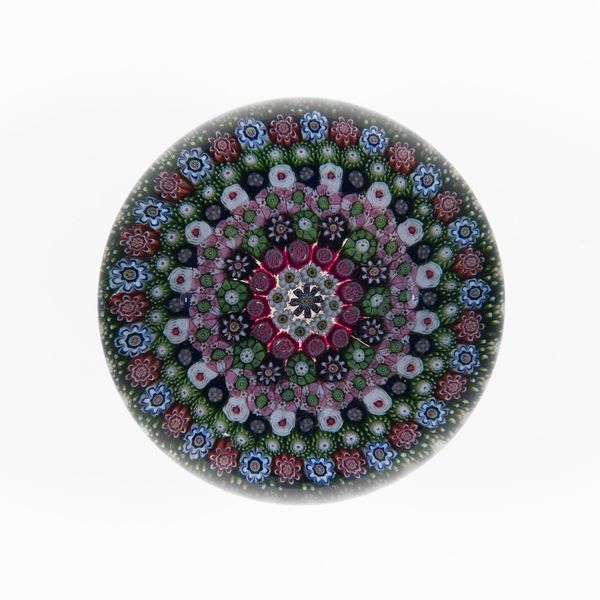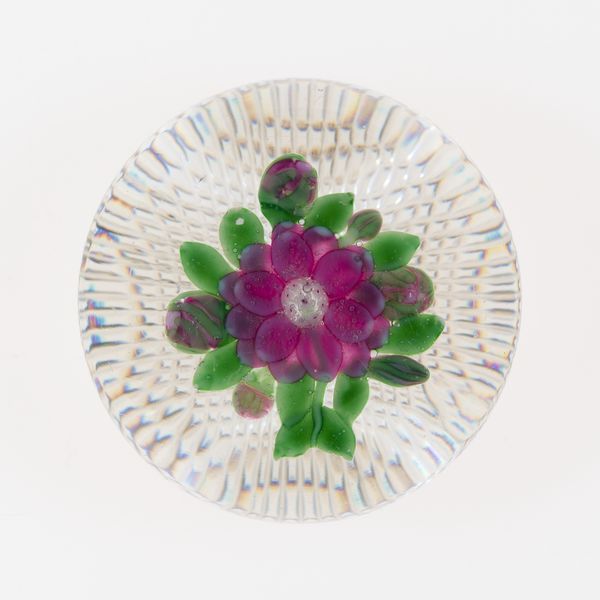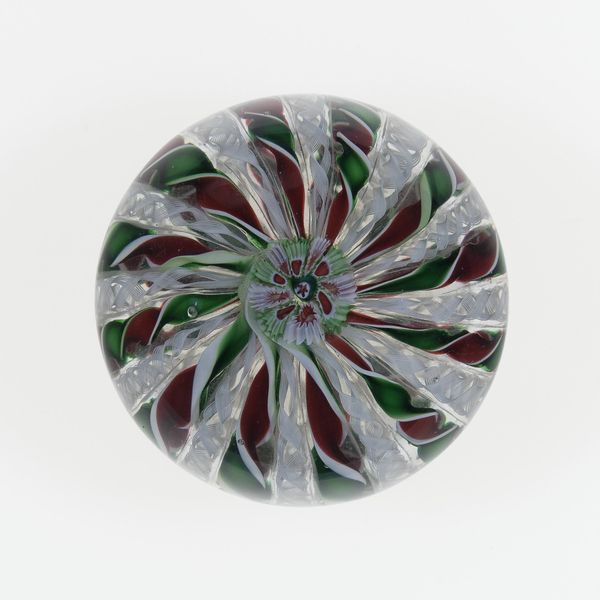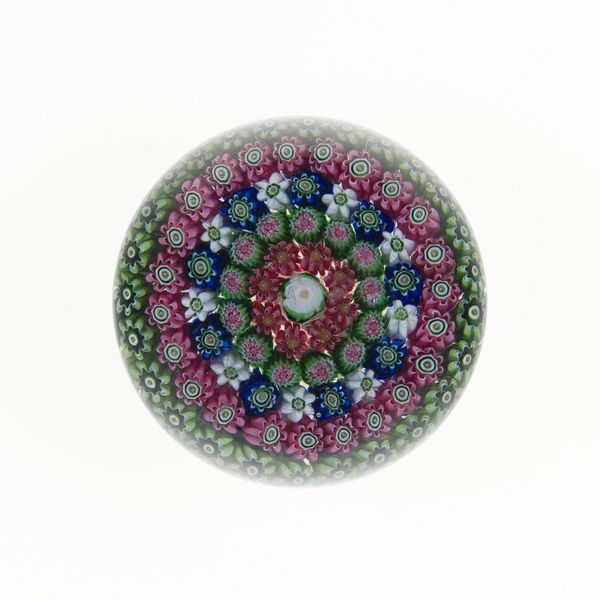
paper, glass, impasto
#
paper
#
glass
#
impasto
#
decorative-art
Dimensions: 3 in.
Copyright: Public Domain
Editor: We're looking at "Paperweight" from the Clichy Glasshouse, made around the 19th century from glass and paper. It's absolutely beautiful; it looks like an exquisitely detailed miniature garden preserved forever. What strikes you most about the piece? Curator: Immediately, the formal symmetry and the controlled tension between organic floral forms and geometric arrangement. Notice the radial distribution; the tiny blossoms meticulously arranged around a central, dominant flower. Editor: Yes, the central flower really draws your eye! Are the colours significant here? Curator: Indeed. The contrasting colours -- greens and dark purples offset against the clear glass. And that pop of central red. They don't necessarily depict reality but achieve a balanced aesthetic. Notice how the distribution of colour creates visual weight and directs the gaze. Editor: It’s almost hypnotic to look at! What does that precise, deliberate structure suggest? Curator: It transcends mere representation, presenting, instead, a highly structured and aesthetically pleasing microcosm. The regularity almost suppresses the organic chaos inherent to nature, suggesting a controlling, human influence, a striving for ideal beauty rather than replicating a real bouquet. Editor: I see what you mean, it’s beauty in order, not found naturally. Thanks, I hadn't considered the imposed order. Curator: The beauty here relies less on the "what" of the flowers themselves and more on "how" the maker employed colour, form, and space within that clear glass orb. And that tension, as I mentioned, informs much of its compelling presence.
Comments
No comments
Be the first to comment and join the conversation on the ultimate creative platform.
